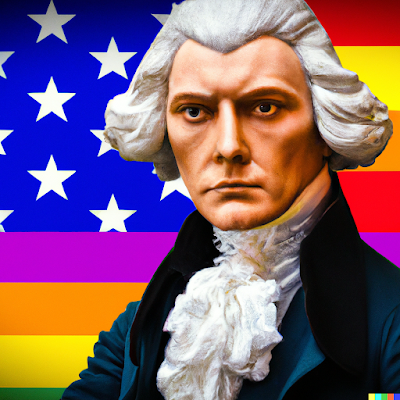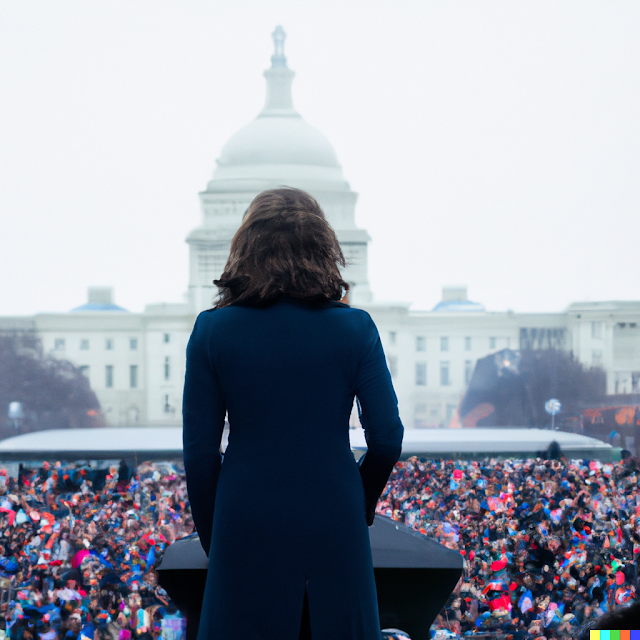Paper #3 (1,583 words)
Marriage bans were an important stepping stone in preventing the economic development of minorities. People dream of marriage, finding a special someone to fall in love with, then propose and get married. Not only do the benefits of marriage include spending the rest of your life with someone, but also IRS tax cuts, Social Security benefits, insurance savings, and even citizenship. This helps build generational wealth, giving voting power to some and, thus, causing a married couple to have more power in society. So, laws prohibiting marriage between two people of the same sex or different races limit access to a higher form of living. Same-sex and Interracial marriage bans are mostly similar because of their discriminatory practices that prevented the development of minorities, but Same-sex Bans were created to keep natural law rules intact and are tied to religion, while interracial bans were to keep the white race pure and citizenship of foreigners low.
Marriage bans for people of the same sex were created because politics mixed with religion. Historically, LGBTQ people have been oppressed throughout American history. One case is the ban on same-sex intimacy and marriage. This is because “sexual impulses and gender roles were thought to be tied both descriptively (as a matter of nature) and prescriptively (as a matter of God-given natural law rules) to one’s status as a man/woman, husband/wife, and father/mother” (William N. Eskridge, Jr. Pg 1337). As God created two sexes, man and woman, they should only have sexual desires to the opposite sex; men and women should have sexual intercourse, not two men or women. This is how American law was made. Because God only made two sexes that should only love each other, policymakers tailored their laws to support this idea. “Confronted with increasing evidence of variation from natural law gender roles and sexual behavior, America’s governing classes responded by … mobilizing state administrative structures to give legal force to the traditionalist norm” (William N. Eskridge, Jr. Pg 1340). Religion states that same-sex marriages go against the traditional ways of the world. Lawmakers used their power to pass bills and amend state constitutions to ban same-sex marriages.
With the political power of the church acting against the progression of rights against LGBTQ people, it would take a significant change in public opinion and government representation to enact legislative change. “In connection with a bill revamping the District of Columbia marriage laws in 1975, Councilman Arrington Dixon included a provision authorizing same-sex marriages in the District. Gay activist groups supported the Dixon bill, but the Catholic Archdiocese of Washington and other opponents raised such a fuss that Dixon withdrew the proposal” (William N. Eskridge, Jr., Pg 49). Churches and religious leaders used their influence to halt the progress of LGBTQ rights, severely stunting the LGBTQ movement. Since amending the constitution would require a super-majority, the most achievable way to acquire rights would be through the Supreme Court, just like African Americans did in Brown v Board of Education. However, because of the influence anti-LGBTQ originations have had, “Since 1971, lawsuits by other same-sex couples in other states have steadily pressed constitutional objections to the law's exclusion of gay and lesbian couples from the institution of marriage. The plaintiffs lost in all the cases' until the Hawaii Supreme Court” (William N. Eskridge, Jr., Pg 48). In Hawaii, a state court case, Baehr v. Miike. Same-sex couples argued that because Hawaii prohibited access to same-sex marriage, it violated the state constitution. Their win was monumental because it was the first state supreme court case to rule that banning same-sex marriage was unconstitutional but also because it opened up the possibility of using the Equal Protection Clause. The Fourteenth Amendment, famous for granting Black Americans citizenship, provided a way for LGBTQ lawyers a constitutional argument for allowing same-sex marriage.
Unlike same-sex marriage bans, Interracial marriage bans were created out of racism. Throughout history, African Americans, especially darker-skinned men, have been seen as savage, dangerous, violent, and less than human. In documentary films such as Ethnic Notions, we are portrayed to white Americans by white Americans in black face as savages. So, banning interracial marriages and even interracial sex served to protect the white race. To aid in their plan, they created a new form of science titled eugenics. The National Human Genome Research Institute states, “Eugenicists worldwide believed that they could perfect human beings and eliminate so-called social ills through genetics and heredity. They believed the use of methods such as involuntary sterilization, segregation and social exclusion would rid society of individuals deemed by them to be unfit” (NIH, 2022) Eugenics was a voice of scientific reasoning behind white supremacy and the banning of Interracial marriages. Politicians can say instead of banning Interracial marriages because they don’t want black and white people to mix, they can say it would be a danger to society and a national health concern if different races inbreed. “Yet until at least World War II, eugenicists reproduced a modern racism that was biological in a particularly virulent sense. … In their determination to protect "white purity," eugenicists believed that even the tightest definitions of race by blood proportion were too loose” ( Peggy Pascoe, Pg 58/59). Eugenics provided an excuse to segregate from black people. By providing a scientific reason that black people should not intermingle with white people, policymakers were able to keep the white race pure. The best part for them was that eugenics didn't only keep black people away from whites but all other races. effects of eugenics were widespread across the country. The amount of Interracial laws skyrocketed across the US. People of all races were barred from intermining, creating a perfectly segregated country.
Racism in America was at an all-time high because of the Interracial marriage bans. Interracial marriages didn't only target black Americans but people of other races who wanted to be American citizens. “From this country's inception, the laws regulating who was or could become a citizen were tainted by racial prejudice. Birthright citizenship, the automatic acquisition of citizenship by virtue of birth, was tied to race until 1940”(Ian F. Haney López, pg 39). Immigration has been linked to race since the very beginning. If America let anyone become a citizen, the white male would lose their majority domination over other minority groups, so politicians would only let other white people immigrate into the country. There are only two ways to gain citizenship, either by being born in the US (only white people at the time) or being Naturalized. In the naturalization route, an alien can become a citizen if they marry a citizen of the United States. However, because of the outlawing of interracial marriage, this option is severely limited. In fact, “Courts … stripped women who married noncitizens of their U.S. citizenship. Congress recognized and mandated this practice in 1907, legislating that an American woman's marriage to an alien terminated her citizenship” (Ian F. Haney López, pg 47). In order to prevent male immigrants from gaining citizenship by marrying a US citizen, the wife would instantly lose her citizenship if she married a non-citizen. Congress even went so far as to try to stop birthright citizenship if the parents weren't citizens. These policies singlehandedly discriminated against all races of people who are not white. The only way to end this discrimination is to outlaw it by amending the Constitution. That is exactly what the reconstruction amendments did.
The overting of Interracial marriage bans acted as an exemplar for overturning same-sex marriage bans. Unless the Constitution says something outright, there will always be debate about whether or not something is legal. The Constitution never said black Americans couldn’t be slaves, so they were until it explicitly stated otherwise. With the passage of the 14th Amendment, equal protection was given under the law; it opened the door for legal change. Especially after Brown v. Board of Education, social justice advocates saw gaining legal precedent was easier than amending the Constitution and that the Supreme Court could be a catalyst for social justice movements. In the SCOTUS case Loving v Virginia, they ruled that “The Fourteenth Amendment requires that the freedom of choice to marry not be restricted by invidious racial discrimination. Under our Constitution, the freedom to marry or not marry, a person of another race resides with the individual and cannot be infringed by the State” (William N. Eskridge, Jr. Pg 799). The Supreme Court ruled that bans on interracial marriage violated the Equal Protection clause, combined with the Due Process Clause. This set the precedent and foundation for the Supreme Court to overturn bans on same-sex couples in Obergefell v. Hodges. Using the same argument that bans on same-sex marriage violated the Equal Protection and Due Process Clause found in the reconstruction amendments and precedent from Loving v Virginia LGBTQ activists were able to legalize gay marriage.
Marriage has been the catalyst for discrimination against race, nationality, citizenship, and sexuality. With all the benefits that come with marriage, white politicians fought so hard to keep their hierarchy. In this paper, I have explained that once the Constitution was ratified, we were eventually able to see positive social justice change. This leaves us off in 2023. We have Supreme Court precedents protecting interracial and same-sex marriage but not any amendments to the Constitution. Just because the precedent is a tale as old as time does not mean it can’t or won’t be overturned. Just look at Roe v Wade.
By Carter Vaughn (1,583)
Works Cited / Source List:
Eskridge, W. N., Jr. SEXUAL AND GENDER VARIATION IN AMERICAN PUBLIC LAW: FROM MALIGNANT TO BENIGN TO PRODUCTIVE.
https://sites.oxy.edu/ron/csp19/2010/Eskridge-sexualand%20gendervariation-2010.pdf
Eskridge, W. N., Jr. The Case for SAME-SEX MARRIAGE From Sexual Liberty to Civilized Commitment
https://sites.oxy.edu/ron/csp19/readings/eskridge-1996-historyofsamesexmarriage.pdf
(2022, May 18). Fact Sheet Eugenics and Scientific Racism. National Human Genome Research Institute. https://www.genome.gov/about-genomics/fact-sheets/Eugenics-and-Scientific-Racism
Pascoe, P. (1996). Miscegenation law, court cases, and ideologies of "race" in twentieth-century [The Journal of American History]. https://sites.oxy.edu/ron/csp19/readings/miscegenationlaw-pascoe.pdf
Haney López, I. F. (1996). White by Law The Legal Construction of Race [New York University].
https://sites.oxy.edu/ron/csp19/readings/lopez-racialrestrictions.pdf
ESKRIDGE, W. N., JR (1997). SEXUALITY, GENDER, AND THE LAW. https://sites.oxy.edu/ron/csp19/readings/eskridgehunter-loving.pdf


Comments
Post a Comment